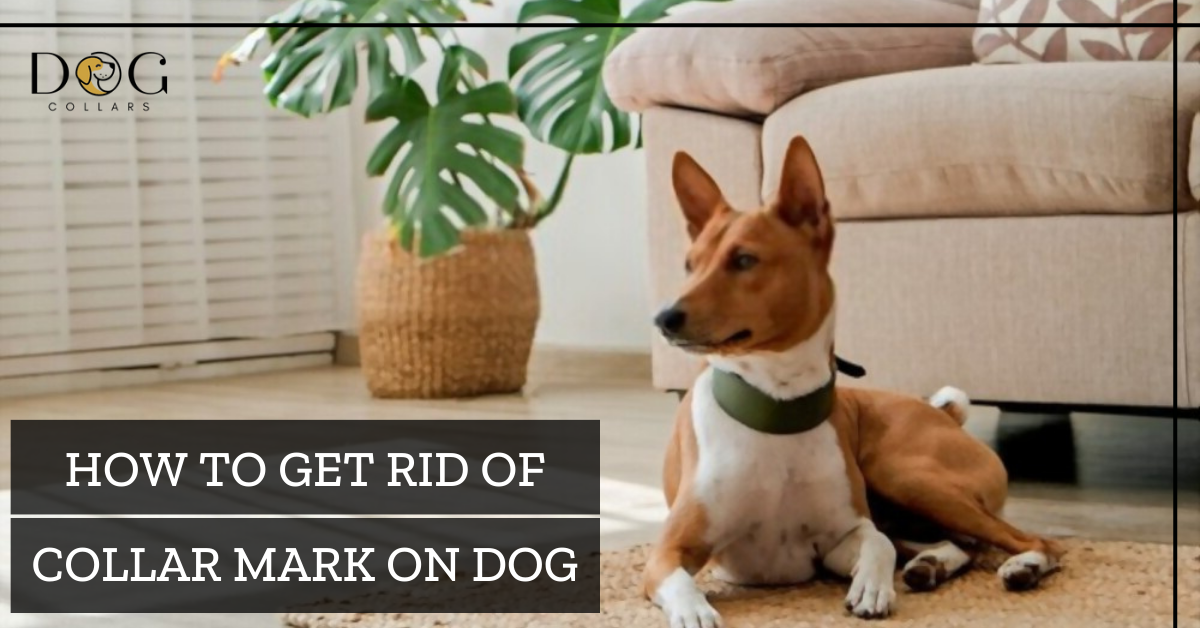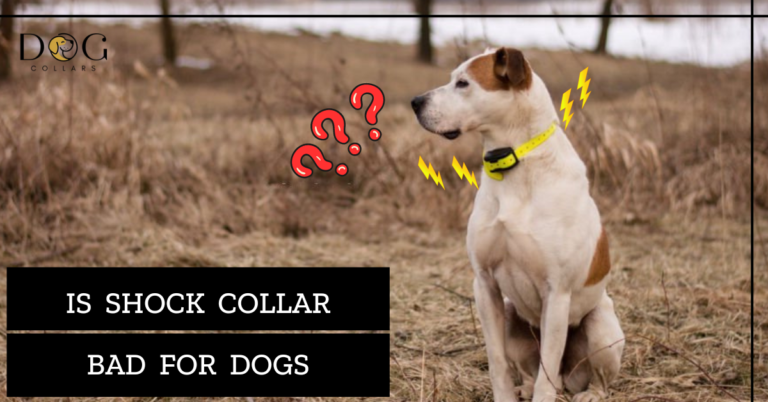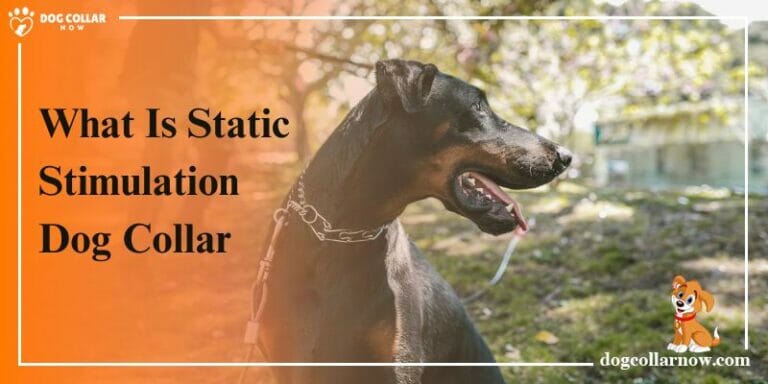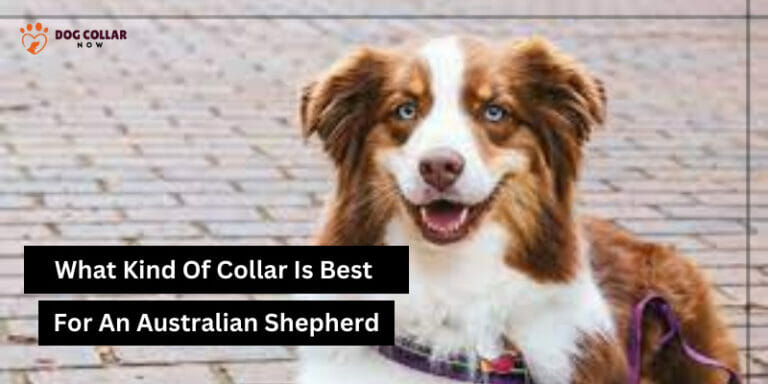How To Get Rid Of Collar Mark On Dog – 5 Easy Ways

If you’re a dog owner, then you know how important it is to have your furry friend wear a collar. Not only does it help identify them if they ever get lost, but it can also be used for training purposes.
However, one downside of wearing a collar is the uncomfortable marks that can develop around your dog’s fur. These marks are commonly referred to as “collar marks” or “hot spots” and they may cause a skin rash or even soreness in some cases.
To prevent marks from forming in the future, choose the right collar for your dog, ensure that it fits properly, regularly check it for tightness and damage, and consider using a harness instead of a collar to keep your dog safe and sound.
But fear not! I will explore some effective ways how to get rid of collar mark on dog and prevent them from happening in the future. So read on to learn more!
How To Get Rid Of Collar Mark On Dog – Steps
If your dog has developed marks, here are some steps you can take to get rid of them:
Take A Break From The Collar
In cases where marks have turned into hot spots or sore areas, the first step in treating marks is to remove the collar entirely and keep your pup away from the neckband. Allow your dog’s skin to breathe and heal for a few days. During this time, you can use alternative methods to ensure your dog’s safety, such as a harness or a long leash.
Use A Padded Collar Or Collar Cover
If you need to use a collar, choose a padded collar or a collar cover to minimize the pressure on your pet’s neck. A padded collar will provide extra cushioning, which can help prevent marks from forming.
Apply Natural Remedies
You can also apply natural remedies such as coconut oil or aloe vera to the affected area to remove stains. These remedies will help soothe the skin and promote healing. Apply a small amount to the mark and gently massage it into the skin.
If you’re dealing with stubborn stains caused by leather collars, try using a mixture of baking soda and water. Simply apply this paste to the affected area and let it sit for 15-20 minutes before rinsing it off with warm water.
Apply A Healing Ointment Or Cream
If the mark is severe or doesn’t go away, you can apply a healing ointment or cream recommended by your vet. These creams will help heal the skin and reduce any inflammation or irritation.
Consult With Your Vet
If you’re unsure about how to treat your pup’s mark or if it doesn’t go away, consult with your vet. They can provide you with further advice on how to treat the mark and ensure that it’s not a symptom of a more severe issue.
Understanding Collar Marks
Collar marks are a common problem faced by many dog owners. These marks can be caused by the constant rubbing of the collar against your pet’s skin, leading to soreness. The pressure from the collar may also restrict blood flow around your pup’s neck, which could cause further discomfort.
It often appears as red or pink stains around your dog’s neck. They may also be accompanied by hair loss or scabbing in severe cases. It is important to recognize these signs early on so that you can take action to prevent further damage.
Some dogs are more prone to developing marks than others due to factors such as their breed and skin sensitivity. Dogs with short hair like Boxers, Bulldogs, and Dobermans have a higher risk of developing them as well as those who wear tight-fitting collars made of materials like leather.
Understanding what causes marks is essential in preventing them from occurring in the first place; so always ensure that you’re using appropriate-sized collars with comfortable material that suits your pet’s needs!
Preventing Dog Collar Marks
Marks can be easily prevented with some simple steps.
- Make sure that the dog’s collar is properly fitted. It should be tight enough to stay on but loose enough to slide one or two fingers underneath.
- Consider using a softer material for your pup’s collar such as nylon or neoprene. Leather collars may look stylish, but they can cause discomfort and chafing over time.
- It’s also important to regularly check the condition of the collar and replace it if it becomes worn or damaged. A frayed collar can rub against your pet’s skin and cause discomfort.
- If you notice any signs of soreness around the neck, remove the collar immediately and give them a break from wearing it until the area has healed.
- Additionally, consider alternating between different types of collars such as harnesses or no-pull devices to give the neck a break from traditional collars altogether.
What does collar chafing look like?
Dog collar chafing is a common issue that many dog owners face, especially if their dog breeds wear a collar regularly. Chafing occurs when the collar rubs against the skin repeatedly, causing rashes and even open wounds.
The most obvious sign is redness or rawness around the neck area. In severe cases, you may also notice scabs or hair loss.
Conclusion
Collar marks can be uncomfortable and unsightly for your furry friend, but they are preventable and treatable. If your dog has developed marks, take a break from using the collar, apply natural remedies, and consult with your vet if necessary.
Remember that prevention is key, so keeping your puppy’s fur clean, brushing it regularly, and avoiding prolonged usage of collars are recommended
Your pup’s safety and well-being are essential, and taking these simple steps can ensure that they are comfortable and happy while wearing their collar or harness. By following these tips, you can prevent and treat marks and enjoy spending time with your furry friend without worry or discomfort.
FAQs
Is it normal for dogs to lose hair around their collar?
No, it is not normal for dogs to lose hair around their collar. This can be a sign of collar irritation, and it’s important to address it promptly to prevent further discomfort or infection.
How do you treat collar sores?
To treat collar sores, remove the collar and clean the affected area with mild soap and water. Apply an antibiotic ointment and keep the area clean and dry. Consider using a padded collar or a harness instead of a regular collar,metal collar, or leather collar to prevent further irritation. If the sores do not heal or become infected, consult a veterinarian.
Why is my dog’s neck red from the collar?
Your pet’s neck is red from the collar due to collar rash, which occurs when the collar rubs against the skin repeatedly, causing open wounds.
Can dog collars cause skin problems?
Yes, dog collars can cause skin problems such as irritation, rashes, and even open wounds if they rub against the skin irritation repeatedly.
Should dogs wear collars all the time?
It is generally recommended that dogs wear collars all the time, as they are an important tool for identification and safety. However, it’s important to monitor your dog for any signs of collar discomfort and adjust or remove the collar as necessary.






